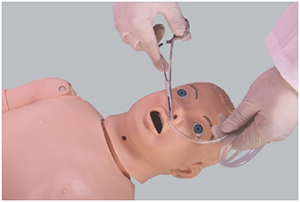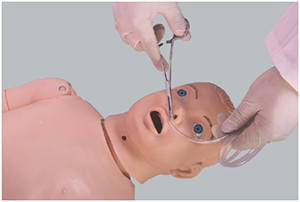Correct insertion of the nasogastric tube is a critical procedure in pediatric care and emergency medicine, especially when dealing with pediatric patients, who are technically challenged due to their small and fragile anatomy. As an important part of medical simulation technology, pediatric nasal feeding tube model has become an important tool in medical education. By simulating complex clinical scenarios, these models help health care workers improve operational skills, emergency response capabilities, and reduce potential clinical errors.

Pediatric nasogastric tube model
Medical technology
The pediatric feeding tube model uses high-precision simulation technology to simulate the anatomical structure of the nose, throat and stomach of children, and can accurately reproduce various complex situations that may be encountered during the insertion of the feeding tube. These models often have an adjustable structure that can simulate differences in children due to their age, size, and condition. Some high-end models are also designed with realistic airway resistance, aspiration feedback, and gastric tube position confirmation, allowing trainers to experience a variety of clinical scenarios and improve their operational accuracy and response speed.
Clinical significance
Infantile nasal feeding tube insertion is not only a basic technical procedure, but also involves a deep understanding of patient safety. In clinical practice, misintubation may lead to aspiration, esophageal perforation, or airway obstruction. By using a pediatric nasogastric tube model, healthcare professionals can practice in a simulated environment how to judge the correct insertion Angle and learn the best procedure to reduce these risks. In addition, simulation training is helpful to improve nurses' handling ability in emergency situations, especially when dealing with sudden complications, and can improve their handling skills of complex problems through training.
Academic major
The value of pediatric nasal feeding tube model in academic field cannot be ignored. Several studies have shown that simulation training is more effective than traditional book learning and observational learning. A study of pediatric nasal feeding tube intubation simulation training for medical staff showed that after the model training, the success rate of the trainees in the actual operation increased by 25%. In addition, simulation training can help healthcare professionals identify and correct common errors in operations more quickly, thereby improving overall quality of care and patient safety.

